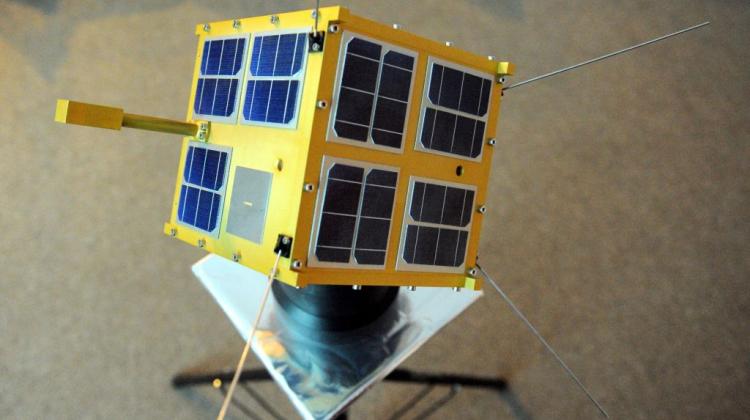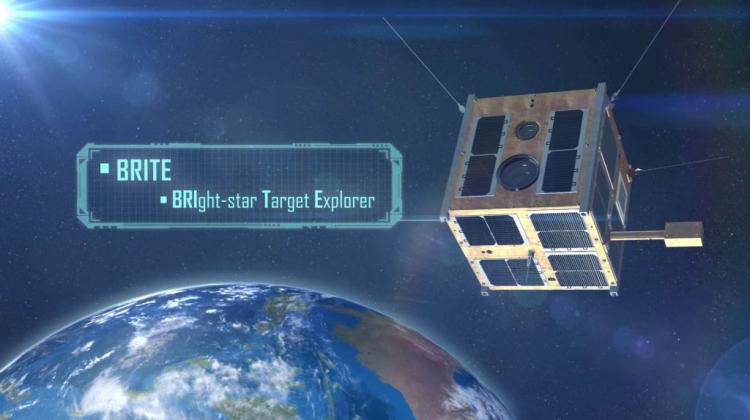Lem, Polish scientific satellite, will be launched into space on Nov. 21

On November 21, Polish scientific satellite Lem will be in space. It will be launched from Russia on Dnepr rocket, told PAP Eng. Tomasz Zawistowski. The launch of the second Polish scientific satellite Hevelius is scheduled for December 29.
Lem and Hevelius are Polish scientific satellites built in the international project BRIght Target Explorer Constellation - BRITE. They have been built by experts from the Space Research Centre PAS and the Nicolaus Copernicus Astronomical Center PAS. Placed in orbit at an altitude of 800 km, for a few years they will carry out precise measurements of 286 brightest stars in the sky.
"Lem will be launched from Russia on November 21 at 8:10 our time. Hevelius, the second Polish satellite, will be in space on December 29. The launch should not be delayed, but in this area nothing is 100% certain. Weather conditions may cause a delay" - told PAP BRITE-PL coordinator Eng. Tomasz Zawistowski of the Space Research Centre PAS.
Lem will be carried by Russian Dnepr rocket, along with several other satellites. "Dnepr is a +recycled+ rocket. It used to be a military rocket, and now instead of a nuclear warhead it carries cargo. In this case, it will be communications and scientific satellites. Lem will be one of the last objects to leave the rocket" - said Zawistowski.
Now the Polish satellite is being shipped to Canada, where with several other satellites it will check the ejector, which eventually will carry them into space. Lem will reach Russia in late October. "We will start preparations for the launch in early November in Russia. After unpacking, we have to carry out a series of tests to make sure that it has survived the journey intact. After several days of testing it will be placed in the ejector, and then in the rocket" - Zawistowski described.
After launch - said Zawistowski - scientists will need about an hour to establish communications. "Then we will be able to schedule sessions, the moments of connecting to the satellite. We plan several 10-20 minute sessions per day" - said the scientist.
The Hevelius will be carried into space by the Chinese Long March 4B rocket. The satellite will leave Poland in the second half of December. "Upon arrival in Beijing it will be taken to the spaceport, where we will unpack it, conduct functional tests - described Zawistowski. - Long March 4B rocket has a very positive successful launch ratio - 100 percent. It has already been launched into space 32 times".
So far, the Poles have launched several instruments into space, some of which still operate working on different orbits - Earth, Mars, or fly towards comets. Polish scientists have not, however, had their own satellite. In February 2012, PW-SAT satellite was launched into space, but it was an educational device, built at Warsaw University of Technology.
Lem and Hevelius are so-called nanosatellites, satellite with very small sizes. The surface of the cubes with 20 cm edges are covered with solar panels. Inside there is room for a telescope, star position sensor, orbit stabilizing systems, transmitters and receivers, and a camera. Two Austrian and a Canadian satellite also participate in BRITE.
Until now, nanosatellites have been used as amateur and educational devices. BRITE is the first project to use these small objects for serious scientific work. Installed telescopes, resembling cameras, will take pictures of the stars. Three out of six satellites will take images in red, and three in blue. These red and blue pairs will be set on a particular star for a time and measure the brightnes of the object. The collected data will be transmitted to ground stations including Warsaw, Canada and Austria.
Polish scientific satellites have been developed in collaboration with the University of Vienna, Graz University of Technology, the University of Toronto and the University of Montreal. Ministry of Science and Higher Education allocated PLN 14.2 million to their construction.
Ewelina Krajczyńska (PAP)
PAP - Science and Scholarship in Poland
ekr/ agt/ as/
tr. RL
Przed dodaniem komentarza prosimy o zapoznanie z Regulaminem forum serwisu Nauka w Polsce.


















